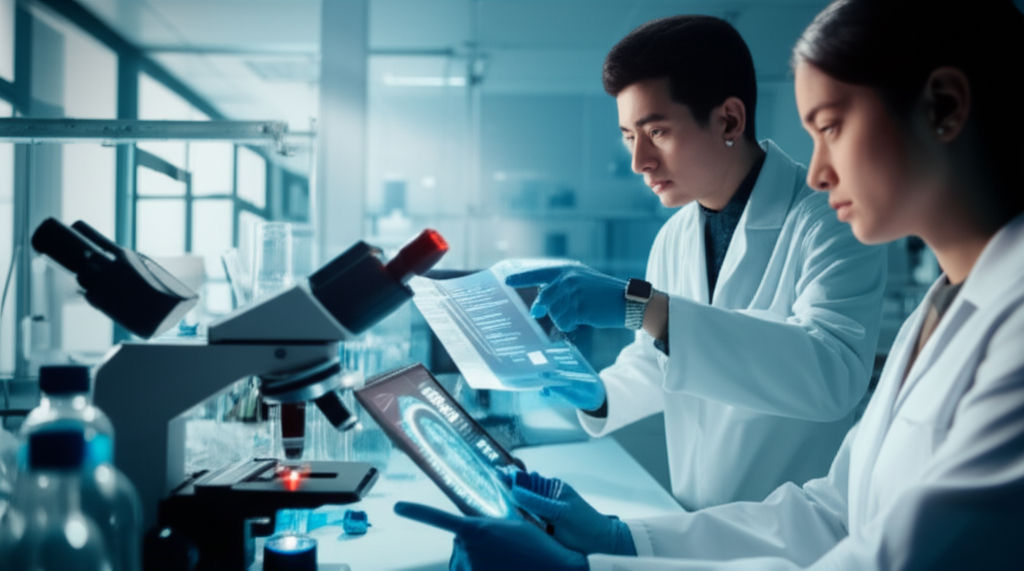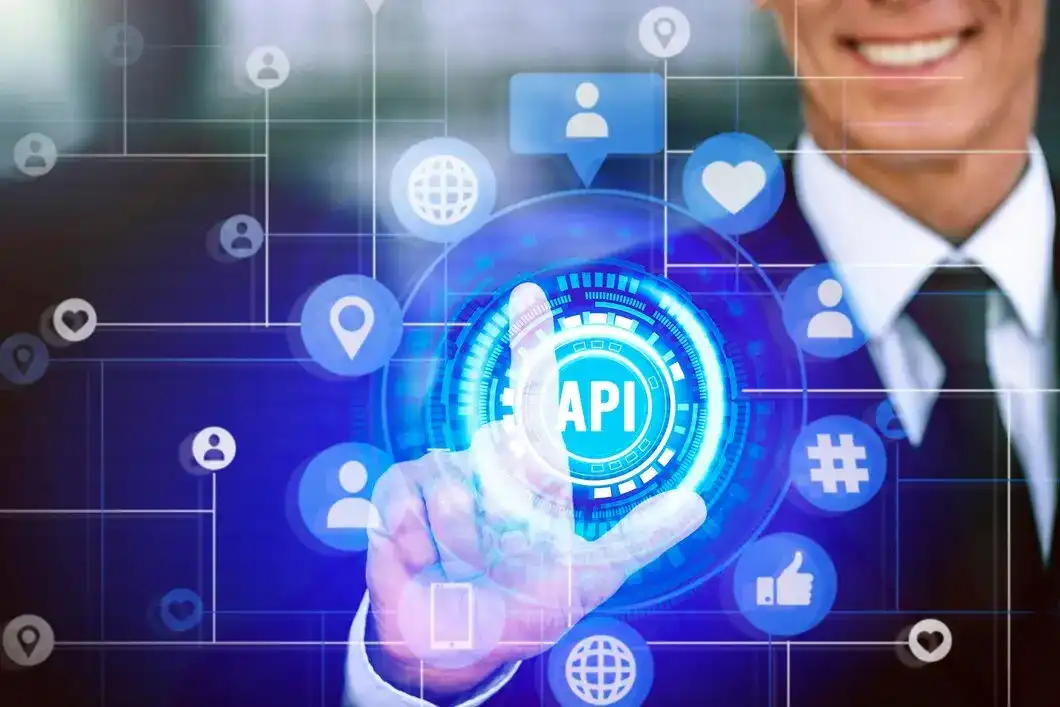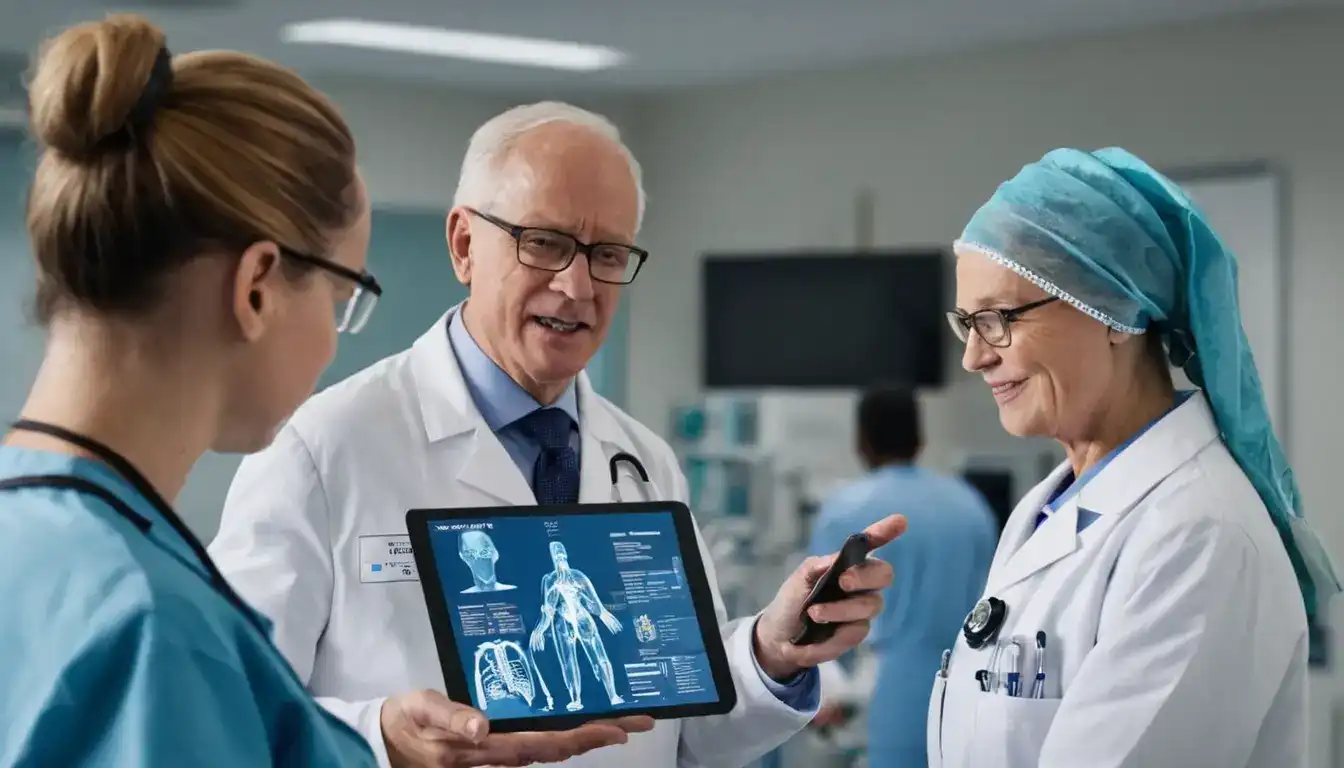Health Sciences Division
Emily Willis

Photo: Health Sciences Division
The Health Sciences Division: A Pillar of Well-being in Our Modern World
In an era defined by rapid advancements and complex global challenges, few fields are as critical to our collective well-being as the Health Sciences Division. Far more than just doctors and hospitals, this expansive and dynamic sector encompasses a vast array of disciplines, all working cohesively to understand, protect, and improve human health. From groundbreaking biomedical research that uncovers the secrets of disease to the tireless efforts in public health that safeguard entire communities, the reach of health sciences touches every aspect of our lives. This article will demystify the Health Sciences Division, exploring its core components, its profound impact on you and your community, and the exciting future it promises.
What Exactly is the Health Sciences Division?
At its core, the Health Sciences Division refers to the broad, multidisciplinary field dedicated to the application of scientific knowledge to health. It's a vast ecosystem where various scientific disciplines converge to address health-related challenges, improve patient outcomes, and promote global well-being. Unlike a singular medical profession, it integrates insights from biology, chemistry, psychology, sociology, and even technology to offer a comprehensive view of healthcare.
Think of it as the engine driving all aspects of health and wellness, encompassing everything from the microscopic world of cells and genes to the macroscopic challenges of global pandemics and health equity. Professionals within this division are committed to preventing diseases, promoting healthy lifestyles, improving healthcare systems, and increasing access to medical care for everyone.
The Pillars of Progress: Key Areas within Health Sciences
The Health Sciences Division is a mosaic of specialized fields, each contributing uniquely to the larger goal of human health. Understanding these key areas helps to appreciate the breadth and depth of this vital sector.
Biomedical Research and Discovery
This is the frontier of innovation, where scientists delve into the fundamental mechanisms of life and disease. Biomedical research is about uncovering new knowledge, from understanding how our bodies function at a cellular level to identifying the causes of complex illnesses like cancer and Alzheimer's. This research forms the bedrock upon which new treatments, diagnostic tools, and preventive strategies are built.
Consider the development of vaccines, which have eradicated diseases like smallpox and significantly reduced the impact of others, such as polio and influenza. This monumental achievement is a direct result of relentless biomedical research. More recently, research has led to breakthroughs like gene therapy for certain types of blindness and the development of new treatments for severe COVID-19, dramatically reducing mortality rates. These discoveries don't just happen; they are the product of dedicated research facilities and laboratories within the Health Sciences Division.
Clinical Practice and Patient Care
While research focuses on discovery, clinical practice is where that knowledge is directly applied to individuals. This area involves the direct diagnosis, treatment, and management of illnesses in patients. It encompasses the roles of doctors, nurses, and a wide array of allied health professionals, such as physical therapists, occupational therapists, and medical laboratory technologists. Their work is centered on providing compassionate, evidence-based care to improve individual health outcomes.
The impact of technology on clinical practice is profound. Electronic Health Records (EHRs), for instance, have replaced paper charts, leading to more efficient data management, reduced errors, and better coordination among healthcare professionals. Telemedicine has also revolutionized patient care by enabling remote consultations and monitoring, bridging geographical gaps and increasing accessibility to care.
Public Health and Community Well-being
Beyond individual patient care, public health focuses on safeguarding and improving the health of entire populations. This involves preventing disease, promoting healthy lifestyles, and responding to health crises at a community level. Epidemiologists, for example, study disease patterns and work to control outbreaks, a role critically highlighted during recent global health crises.
Public health initiatives are diverse and impactful. They include:
- Immunization campaigns: Encouraging communities to get vaccinated against dangerous diseases to prevent widespread outbreaks.
- Health education programs: Providing information and resources on topics like nutrition, physical activity, and substance abuse prevention to empower individuals to make healthier choices.
- Environmental health programs: Addressing factors like air and water quality that impact community health.
- Mental health initiatives: Boosting the availability of resources and outreach programs to combat stigma and improve access to mental health support.
Investing in public health can lead to significant savings and improved outcomes. A study by Trust for America's Health found that investing just $10 per person per year in proven community-based programs for physical activity, nutrition, and tobacco prevention could save the country over $16 billion annually within five years.
Health Education and Promotion
A cornerstone of the Health Sciences Division is empowering individuals with the knowledge and skills to make informed decisions about their health. Health education professionals work to promote health literacy and positive lifestyle choices, which are crucial for preventing diseases before they occur. This proactive approach can reduce the burden of chronic diseases and enhance overall population health.
From school health programs teaching children about healthy eating to nationwide campaigns raising awareness about chronic conditions, health education is vital for fostering a culture of well-being.
Health Technology and Innovation
The rapid evolution of technology is fundamentally transforming the Health Sciences Division. This area focuses on developing and applying cutting-edge tools and systems to improve healthcare delivery, diagnostics, and treatment. Innovations include:
- Advanced diagnostic tools: Such as MRIs and CT scans, which provide detailed images for more precise disease detection.
- Artificial Intelligence (AI) and Machine Learning: Revolutionizing drug development, customizing patient treatment plans, and enabling earlier detection of illnesses by analyzing vast amounts of data.
- Telehealth and remote monitoring: Bridging geographical barriers and allowing healthcare providers to monitor patients' health in real-time.
- Wearable health devices: Continuously tracking everything from physical activity to glucose levels, empowering individuals with their own health data.
These technological advancements streamline operations, enhance patient safety, and contribute to better treatment results. Health informatics, for instance, has been linked to a 15% reduction in inpatient mortality rates and a 27% decrease in medication errors in facilities that utilize these tools.
Why the Health Sciences Division Matters to You
The intricate workings of the Health Sciences Division might seem distant, but their impact resonates deeply in your daily life.
- Direct Impact on Personal Health: From the medications you take to the diagnostic tests you receive, the advancements in health sciences directly influence your ability to prevent, diagnose, and treat illness.
- Protection from Global Threats: The rapid response to pandemics, the development of vaccines, and the ongoing surveillance of infectious diseases are all orchestrated by the public health arm of the Health Sciences Division, protecting you and your loved ones from widespread health crises.
- Empowering Informed Choices: Through health education, you gain the knowledge to make better decisions about your diet, exercise, and overall lifestyle, leading to a healthier and more fulfilling life.
- A Healthier Future: Continuous biomedical research and technological innovation are constantly pushing the boundaries of what's possible, promising more effective treatments and even cures for conditions that currently pose significant challenges.
Navigating Your Health: Practical Insights from Health Sciences
Understanding the Health Sciences Division can empower you to become a more proactive participant in your own health journey.
- Understanding Medical Research: When you encounter health news, remember that reliable information often stems from rigorous biomedical research. Look for sources that cite studies, discuss methodology, and acknowledge limitations. This critical thinking helps you sift through misinformation.
- Making Informed Health Choices: Leverage the wealth of evidence-based information generated by health sciences professionals. Consult healthcare providers for personalized advice, and seek out reputable organizations for general health guidelines.
- Preventative Health Strategies: The Health Sciences Division emphasizes prevention as a cornerstone of well-being. Simple yet powerful strategies include:
- Regular Physical Activity: Consistent exercise is a proven defense against numerous chronic diseases.
- Balanced Nutrition: A diet rich in fruits, vegetables, and whole grains, guided by nutrition science, is fundamental for good health.
- Routine Screenings and Vaccinations: These preventive measures, championed by public health initiatives, can detect issues early or prevent diseases entirely.
- The Power of Collaboration: Recognize that your healthcare often involves a team of diverse professionals – doctors, nurses, therapists, and specialists – all working together. This interdisciplinary approach, a hallmark of the Health Sciences Division, ensures comprehensive and coordinated care.
The Future of Health Sciences: Trends and Transformations
The Health Sciences Division is continuously evolving, driven by scientific breakthroughs, technological advancements, and shifting global health priorities. Several exciting trends are shaping its future:
- Personalized and Precision Medicine: Moving beyond a "one-size-fits-all" approach, this trend focuses on tailoring treatments and preventive strategies to an individual's unique genetic makeup, lifestyle, and environment.
- Digital Health and AI Integration: The increasing use of telemedicine, wearable devices, and Artificial Intelligence (AI) will continue to revolutionize healthcare delivery, making it more accessible, efficient, and data-driven. AI, for instance, is accelerating drug development and enabling customized treatment plans.
- Emphasis on Preventative Care: There's a growing global recognition that preventing disease is more effective and sustainable than treating it. Future efforts will increasingly focus on lifestyle interventions, early screening programs, and robust health education.
- Global Health Equity: Addressing health disparities and ensuring equitable access to quality healthcare for all populations
Latest ✨
View AllImproving stamina and endurance is important for athletes and overall health. Cardiovascular exercise, strength training, endurance training, HIIT, plyometrics, a balanced diet, rest, and monitoring progress are effective strategies. Consistency, listening to your body, and seeking professional advice are key.
Emily Willis
Discover why economic planning is the strategic roadmap for national development, ensuring efficient resource allocation, prosperity, and a stable future.
Emily Willis
Explore oligopoly: where few powerful firms dominate markets. Learn their strategic interdependence, high barriers to entry, and profound impact on major indust...
Emily Willis
Digital storytelling crafts future classrooms! Combine narratives & tech for engaging learning, boosting student engagement, critical thinking & creativity.
Emily Willis
Business
View All
August 5, 2024
Effective Marketing Strategies to Increase Your Business Saleseffective marketing strategies in today's competitive marketplace. It discusses the significance of understanding the target audience, building a strong brand identity, and implementing various marketing tactics to increase sales. Specific strategies such as video marketing, influencer marketing, optimizing customer experience, embracing omnichannel marketing, tracking performance, staying updated on trends, and continuous improvement are highlighted.
Emily Willis

June 8, 2025
Email Marketing Builds LoyaltyTransform buyers into brand advocates! Learn how email marketing leverages personalization & segmentation to cultivate unwavering customer loyalty.
Emily Willis

July 6, 2025
Irish Business Systems UnleashedUnleash your Irish business potential! Discover how robust systems drive growth, efficiency, and overcome challenges in Ireland's dynamic market.
Emily Willis
Economy
View Allchallenges and opportunities presented by economic uncertainty and explores strategies that governments and businesses can implement to mitigate risks, ensure stability, and pave the way for future success.
Read MoreCentral banks are facing unique challenges in the current economic landscape, including rising inflation, geopolitical tensions, and lingering effects of the pandemic. They have a set of tools at their disposal, such as monetary policy, open market operations, and reserve requirements, to influence the economy.
Read MoreDiscover the foundations of banking stability. Learn how strong regulations, capital, deposit insurance, and technology build a resilient financial sector.
Read MoreEntertainment
View All
July 5, 2025
On Par Good TimesTired of fleeting happiness? Learn to cultivate 'on par good times' for consistent fulfillment & balanced well-being. Get actionable strategies now!
Emily Willis

July 5, 2025
EVO Fredericksburg ExcitesEVO Fredericksburg transforms local entertainment! Enjoy cutting-edge cinema, bowling, arcade games, and dining all in one premier destination.
Emily Willis

July 4, 2025
Floating Fun CenterDive into delight at Floating Fun Centers! Explore dynamic inflatable water parks packed with slides, obstacles, and endless summer adventure.
Emily Willis
Health
View AllThe healthcare landscape is being transformed by technological advancements, with telehealth and remote care providing convenient access to healthcare services. Artificial intelligence is revolutionizing diagnostics, personalized medicine, and drug discovery. Wearable technology is empowering patients to take control of their health.
Emily Willis
Princess Kate's health journey revealed: From surgery to a shocking cancer diagnosis & ongoing recovery. Get the full, respectful update here.
Emily Willis
our minds are often overwhelmed with information and stimuli, leading to stress and anxiety. Mindfulness and meditation offer tools to cultivate inner peace and well-being. Mindfulness involves being present in the moment without judgment, while meditation involves focusing attention on an object or thought.
Emily Willis
Trending 🔥
View All
1
2
3
4
6
7
8
9
10
Lifestyle



Technology
View All
August 4, 2024
The Rise of Edge Computing: Transforming Data Processing
Edge computing is a distributed computing model that processes data closer to its source, reducing latency, saving bandwidth, and enhancing security. It is transforming industries such as manufacturing, healthcare, retail, transportation, and energy by enabling real-time data processing and improving operational efficiency.

August 5, 2024
What is Blockchain and How does it Work?
Blockchain technology is a decentralized digital ledger that records transactions securely and transparently across multiple computers. Key concepts include decentralization, cryptographic security, and consensus mechanisms. Transactions are verified, grouped into blocks, and added to the blockchain through a consensus process.

August 5, 2024
How AI is Used to Solve Problems in Various Industries
Artificial Intelligence (AI) is reshaping industries across the globe, from healthcare to finance, by solving complex problems, increasing efficiency, and driving innovation. In healthcare, AI is saving lives through drug discovery, disease diagnosis, personalized medicine, and virtual health assistants.

August 5, 2024
Benefits of Using Cloud Computing for Your Business
Cloud computing has revolutionized business operations by offering cost savings, scalability, improved collaboration, enhanced security, and robust disaster recovery. It allows businesses to access services over the internet, reducing the need for physical infrastructure and providing flexibility.


















